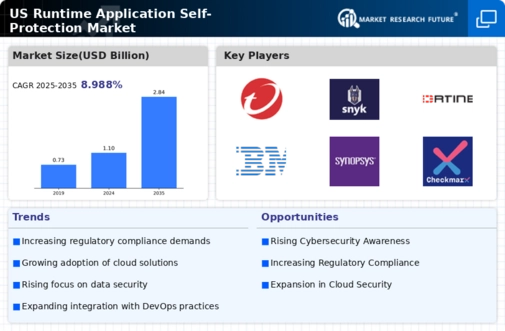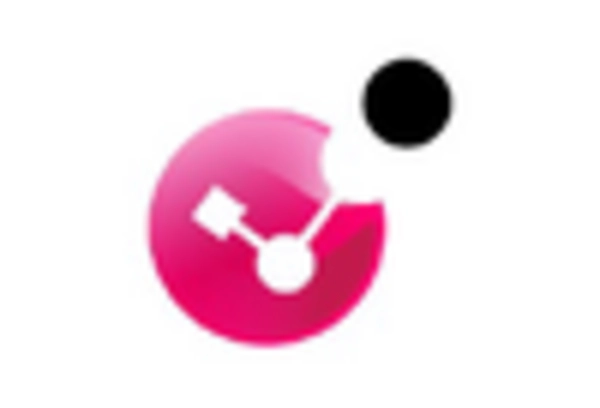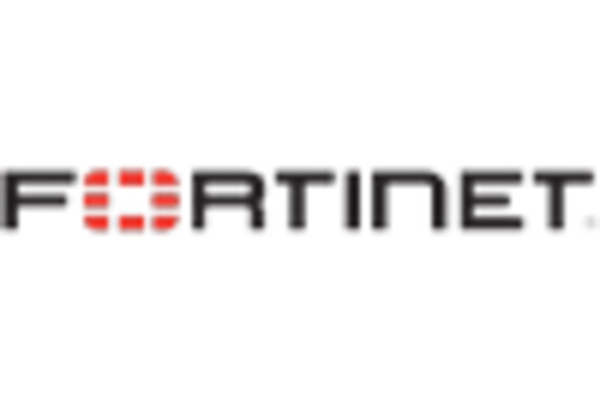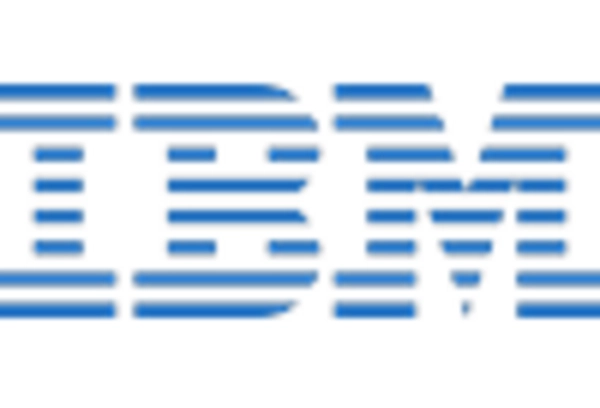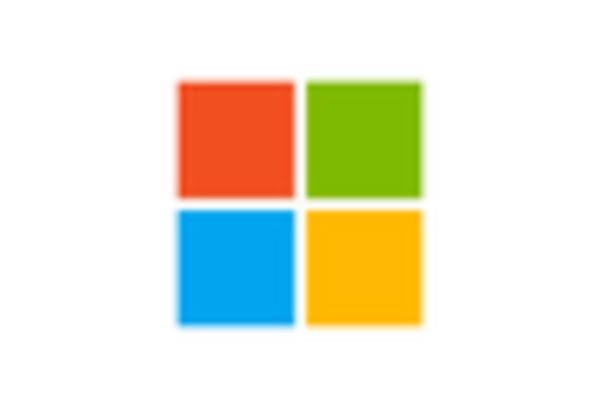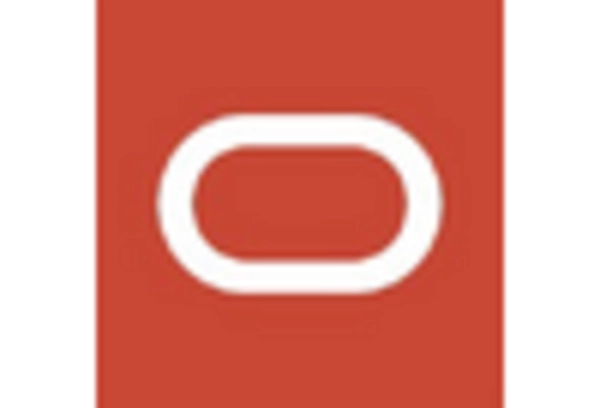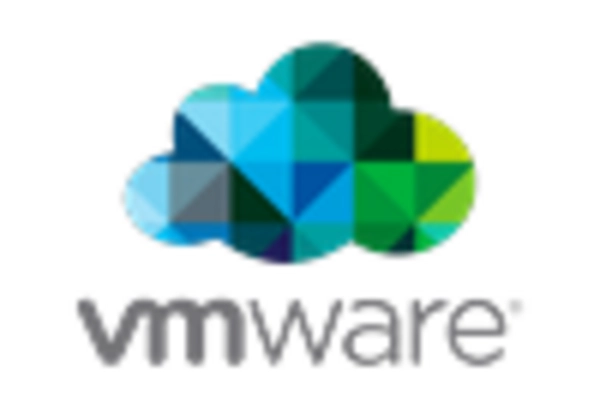The runtime application-self-protection market is currently characterized by a dynamic competitive landscape, driven by the increasing demand for robust security solutions amid rising cyber threats. Key players such as IBM (US), Microsoft (US), and Palo Alto Networks (US) are strategically positioned to leverage their technological expertise and extensive resources. IBM (US) focuses on innovation through its Watson AI capabilities, enhancing threat detection and response mechanisms. Meanwhile, Microsoft (US) emphasizes partnerships and integrations within its Azure cloud platform, aiming to provide comprehensive security solutions. Palo Alto Networks (US) is actively pursuing mergers and acquisitions to expand its portfolio, particularly in cloud security, which is becoming increasingly vital in the current digital landscape. Collectively, these strategies contribute to a competitive environment that is both collaborative and aggressive, as companies seek to differentiate themselves through advanced technology and integrated solutions.
In terms of business tactics, companies are increasingly localizing their operations to better serve regional markets, optimizing supply chains to enhance efficiency and responsiveness. The market structure appears moderately fragmented, with several key players holding substantial market shares while numerous smaller firms also contribute to the competitive dynamics. This fragmentation allows for innovation and niche offerings, although the influence of major players remains significant in shaping market trends and consumer expectations.
In October 2025, IBM (US) announced a strategic partnership with a leading cloud service provider to enhance its runtime application-self-protection capabilities. This collaboration aims to integrate advanced AI-driven security features into cloud applications, thereby addressing the growing concerns around data breaches and application vulnerabilities. The strategic importance of this partnership lies in its potential to provide clients with a more comprehensive security framework, reinforcing IBM's position as a leader in the market.
In September 2025, Microsoft (US) launched a new suite of security tools designed specifically for its Azure platform, incorporating runtime application-self-protection features. This initiative reflects Microsoft's commitment to enhancing security for its cloud customers, particularly as enterprises increasingly migrate to cloud environments. The launch is strategically significant as it not only strengthens Microsoft's competitive edge but also aligns with the broader trend of integrating security into cloud services, which is becoming a critical requirement for businesses.
In November 2025, Palo Alto Networks (US) completed the acquisition of a cybersecurity startup specializing in machine learning algorithms for threat detection. This acquisition is expected to bolster Palo Alto's existing security offerings, particularly in the realm of runtime application protection. The strategic importance of this move lies in its potential to enhance the company's technological capabilities, allowing for more proactive and intelligent security measures that can adapt to evolving threats.
As of November 2025, the competitive trends in the runtime application-self-protection market are increasingly defined by digitalization, AI integration, and a focus on sustainability. Strategic alliances are shaping the landscape, enabling companies to pool resources and expertise to address complex security challenges. Looking ahead, competitive differentiation is likely to evolve from traditional price-based competition to a focus on innovation, advanced technology, and supply chain reliability. This shift underscores the necessity for companies to not only enhance their product offerings but also to ensure that their operational frameworks are resilient and adaptable to the fast-changing market demands.


